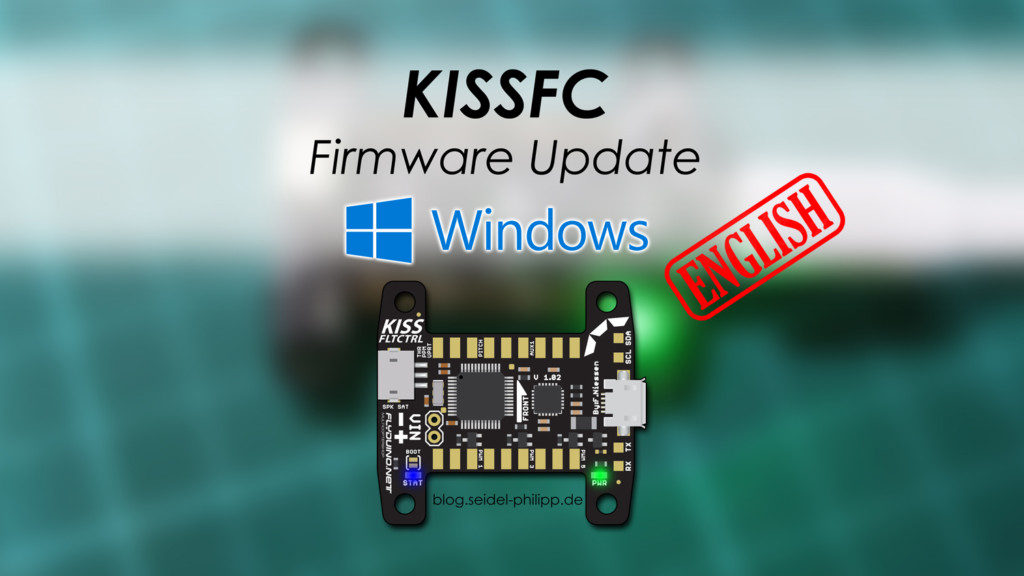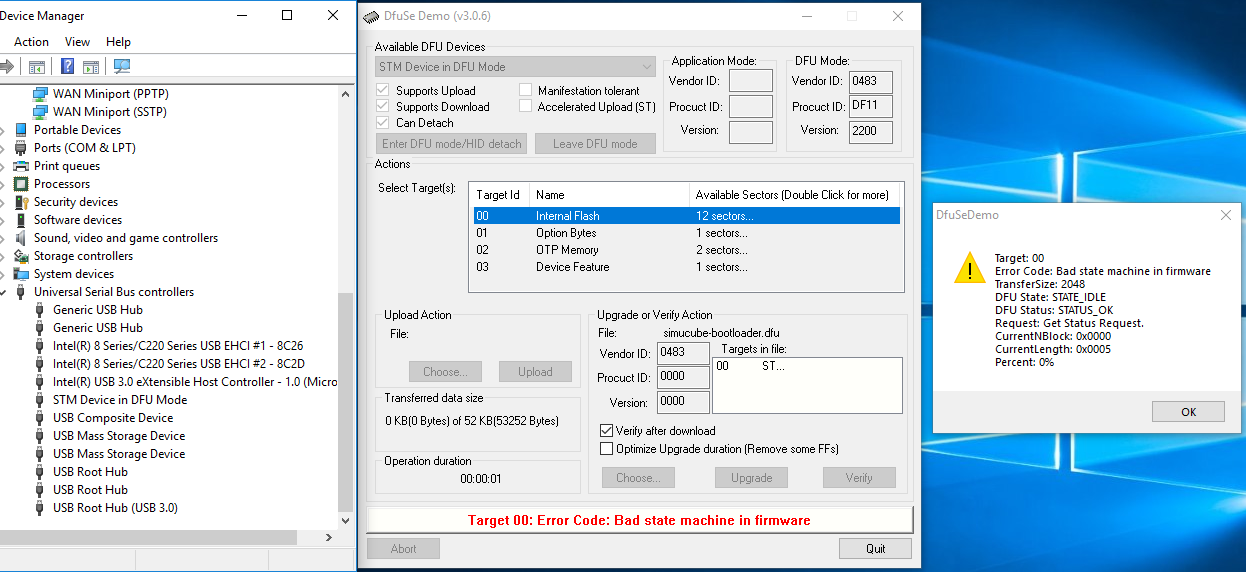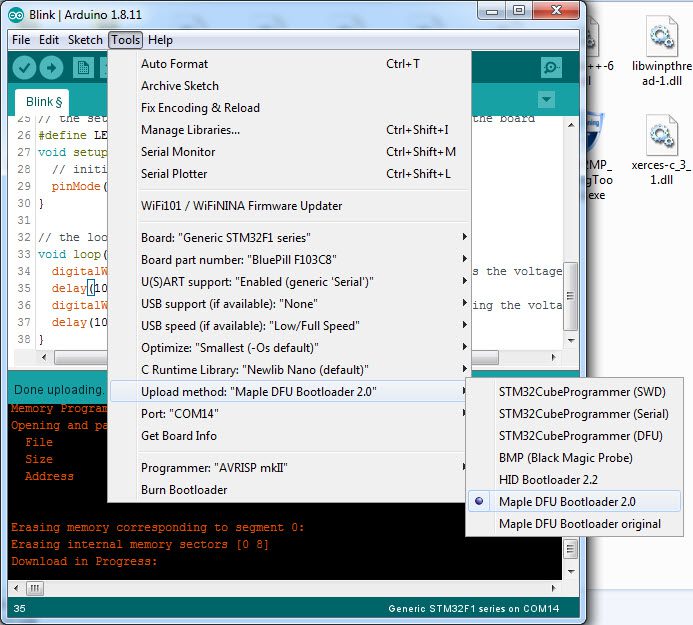- Stm32 Dfu Driver For Mac Os
- Stm32 Dfu Driver For Mac Download
- Stm32 Dfu Driver Macos
- Stm32 Dfu Driver For Macbook Pro
The reason that I could not DFU to the F4 were two fold. The LibUSB driver that we use for the F1 DFU does not work correctly with the F4 2. The version of dfu-util we use with the F1 is not compatible with DFUSe needed for the F4. I think perhaps both the driver and the version of dfu-util which are included in the core, need to be updated.

Some newer boards with full USB support must be flashed in USB DFU mode. This is a straightforward process in Configurator versions 0.67 and newer. The standard flashing procedure should work successfully with the caveat of some platform specific problems as noted below. The “No reboot sequence” checkbox has no effect as the device will automatically be detected when already in bootloader mode (a DFU device will appear in the connect dropdown if this is the case). The Full chip erase checkbox operates as normal. The baudrate checkbox is ignored as it has no relevance to USB.
Stm32 Dfu Driver For Mac Os
- This section only applies to Windows, skip this if you are on a Mac, as there are no drivers needed for Mac. If you open up QMK Toolbox, press the reset button on your ATmega32u4-based board, and see (NO DRIVER) on the line for Atmel DFU device connected, then you'll need to install the bootloader driver on Windows. To install the DFU Bootloader driver, right-click anywhere in the top part of.
- This applies to Windows only, Mac OSX and Linux users wont have to install drivers (in most cases). Plug the board to USB, press the reset button twice within 0.5 second to set the board in DFU mode. Launch Zadig installer, the board will be recognized as STM32 BOOTLOADER, install the driver.
- Download STM32 USART Bootloader for free. USART Bootloader for STM32 Family devices. Small universal tool for handling USART STM32 bootloader. Works with all STM32 family devices (also with newest STM32F4 and STM32F0).
- The reason that I could not DFU to the F4 were two fold. The LibUSB driver that we use for the F1 DFU does not work correctly with the F4 2. The version of dfu-util we use with the F1 is not compatible with DFUSe needed for the F4. I think perhaps both the driver and the version of dfu-util which are included in the core, need to be updated.
Charging-Only Cables
If you see no signs of life on your host computer when you plug in your board, check your cable with your mobile phone or some other USB device - some charging cables have only the power pins connected. These will power up the board, so the leds light up, but the host computer will not react to the device at all. You need a proper USB cable to connect your board to the Cleanflight Configurator.
Platform Specific: Linux
Linux requires udev rules to allow write access to USB devices for users. An example shell command to acheive this on Ubuntu is shown here:(echo '# DFU (Internal bootloader for STM32 MCUs)' echo 'SUBSYSTEM'usb', ATTRS{idVendor}'0483', ATTRS{idProduct}'df11', MODE='0664', GROUP='plugdev') | sudo tee /etc/udev/rules.d/45-stdfu-permissions.rules > /dev/null
This assigns the device to the plugdev group(a standard group in Ubuntu). To check that your account is in the plugdev group type groups in the shell and ensure plugdev is listed. If not you can add yourself as shown (replacing <username> with your username):sudo usermod -a -G plugdev <username>
If you see your ttyUSB device disappear right after the board is connected, chances are that the ModemManager service (that handles network connectivity for you) thinks it is a GSM modem. If this happens, you can issue the following command to disable the service:sudo systemctl stop ModemManager.service
If your system lacks the systemctl command, use any equivalent command that works on your system to disable services. You can likely add your device ID to a blacklist configuration file to stop ModemManager from touching the device, if you need it for cellural networking, but that is beyond the scope of cleanflight documentation.
Stm32 Dfu Driver For Mac Download

If you see the ttyUSB device appear and immediately disappear from the list in Cleanflight Configurator when you plug in your flight controller via USB, chances are that NetworkManager thinks your board is a GSM modem and hands it off to the ModemManager daemon as the flight controllers are not known to the blacklisted
Platform Specific: Windows
Stm32 Dfu Driver Macos

Stm32 Dfu Driver For Macbook Pro
Chrome can have problems accessing USB devices on Windows. A driver should be automatically installed by Windows for the ST Device in DFU Mode but this doesn’t always allow access for Chrome. The solution is to replace the ST driver with a libusb driver. The easiest way to do that is to download Zadig. With the board connected and in bootloader mode (reset it by sending the character R via serial, or simply attempt to flash it with the correct serial port selected in Configurator): * Open Zadig* Choose Options > List All Devices* Select STM32 BOOTLOADER in the device list* Choose WinUSB (v6.x.x.x) in the right hand box* Click Replace Driver* Restart Chrome (make sure it is completely closed, logout and login if unsure)* Now the DFU device should be seen by Configurator